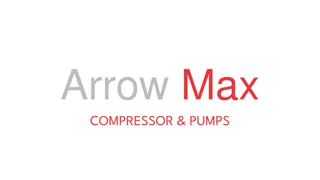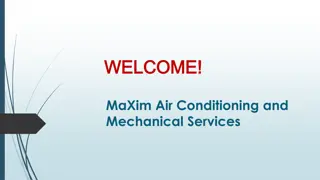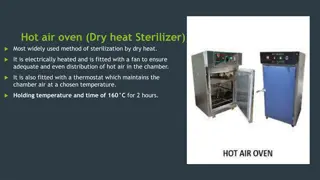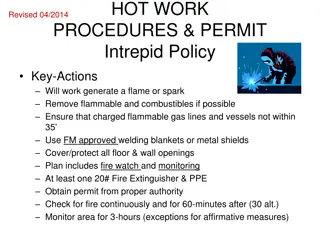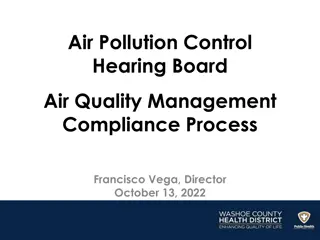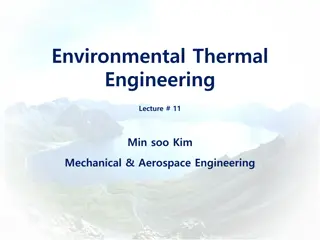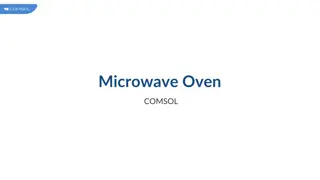
Understanding the Working Principle and Uses of Hot Air Ovens
Discover the working principle and various uses of hot air ovens, essential for sterilization in healthcare settings. Learn about dry heat sterilization, types of hot air ovens, and why they are crucial for patient safety.
Download Presentation

Please find below an Image/Link to download the presentation.
The content on the website is provided AS IS for your information and personal use only. It may not be sold, licensed, or shared on other websites without obtaining consent from the author. If you encounter any issues during the download, it is possible that the publisher has removed the file from their server.
You are allowed to download the files provided on this website for personal or commercial use, subject to the condition that they are used lawfully. All files are the property of their respective owners.
The content on the website is provided AS IS for your information and personal use only. It may not be sold, licensed, or shared on other websites without obtaining consent from the author.
E N D
Presentation Transcript
Hot Air Oven Working Principle Uses Labelled Diagram Pharmawiki.in
Sterilization and aseptic processing are essential practices for healthcare product manufacture and many healthcare services. The execution of these processes in an appropriate manner is essential for patient safety. A hot air oven is used to sterilize equipment and materials used in the medical field. A hot air oven is a type of dry heat sterilization. Dry heat sterilization is used on equipment that cannot be wet, and on material that will not melt, catch fire, or change form when exposed to high temperatures. Moist heat sterilization uses water to boil items or steam them to sterilize and does not take as long as dry heat sterilization.
Types of HOT AIR OVEN There are two types of dry-heat sterilizers: the static-air type and the forced-air type.
Uses of HOT AIR OVEN A dry heat cabinet is easy to install and has relatively low operating costs It penetrates materials It is nontoxic and does not harm the environment; And it is noncorrosive for metal and sharp instruments.

